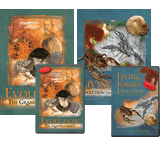Hummingbirds—Designed to Catch Bugs!
Did you know that hummingbirds do not survive solely on a diet of nectar?

Did you know that hummingbirds do not survive solely on a diet of nectar? They also gain nutrients from eating insects. A recent study concluded that “hummingbirds need the equivalent of 300 fruit flies a day to survive.”1 Of course, when God created hummingbirds on Day Five of the Creation Week, they got all the nutrition they needed from plants (Genesis 1:30). Hummingbirds only started eating insects after the Fall.
The hummingbird has a long, slender beak, perfectly designed to sip nectar. So how do hummingbirds catch all those bugs? During multiple studies over the past few years, scientists have discovered why hummingbirds are so efficient at catching insects.
“Using high speed video of three hummingbird species catching fruit flies, the researchers found that the hummingbird’s bendy lower beak flexes by as much as 25 degrees when it opens, while also widening at the base to create a larger surface for catching insects.”2 The hummingbird also has the amazing ability to snap its beak shut in less than a hundredth of a second.3 That would certainly make it hard for an unsuspecting fruit fly to escape!
God designed the hummingbird’s beak with wonderful features that help it to survive. If you would like to learn more, please read:
Footnotes
- National Evolutionary Synthesis Center (NESCent), “Hummingbirds Catch Flying Bugs with the Help of Fast-Closing Beaks,” ScienceDaily, July 20, 2011, www.sciencedaily.com/releases/2011/07/110719121356.htm.
- NESCent, “Hummingbirds Catch Flying Bugs.”
- NESCent, “Hummingbirds Catch Flying Bugs.”
Recommended Resources
- © 2025 Answers in Genesis
- Privacy Policy
- Contact
- About

